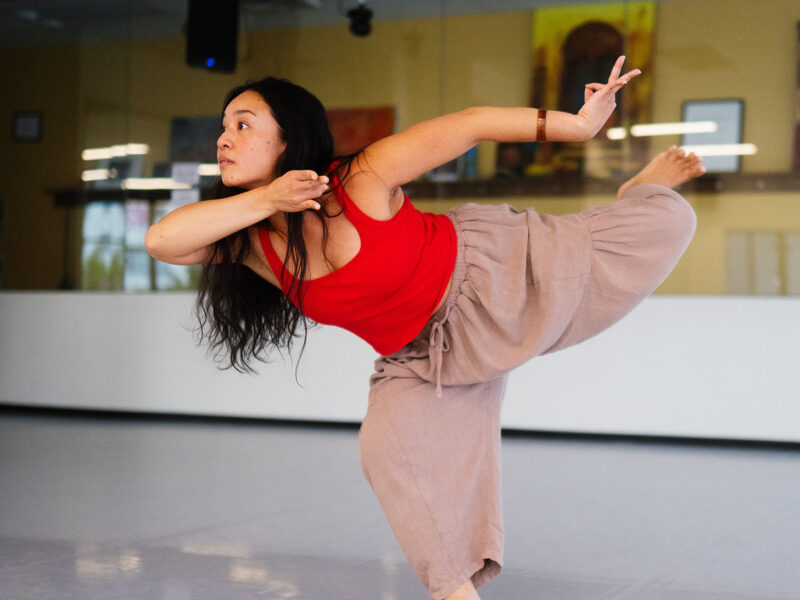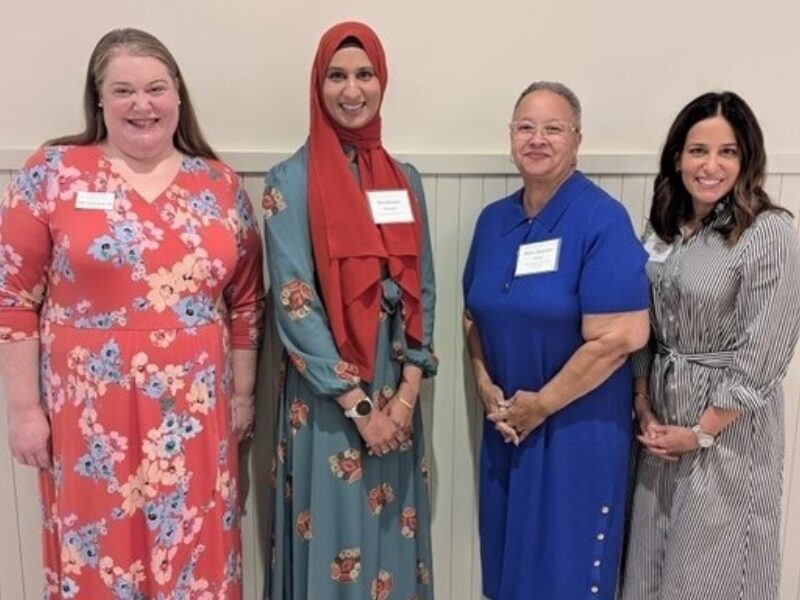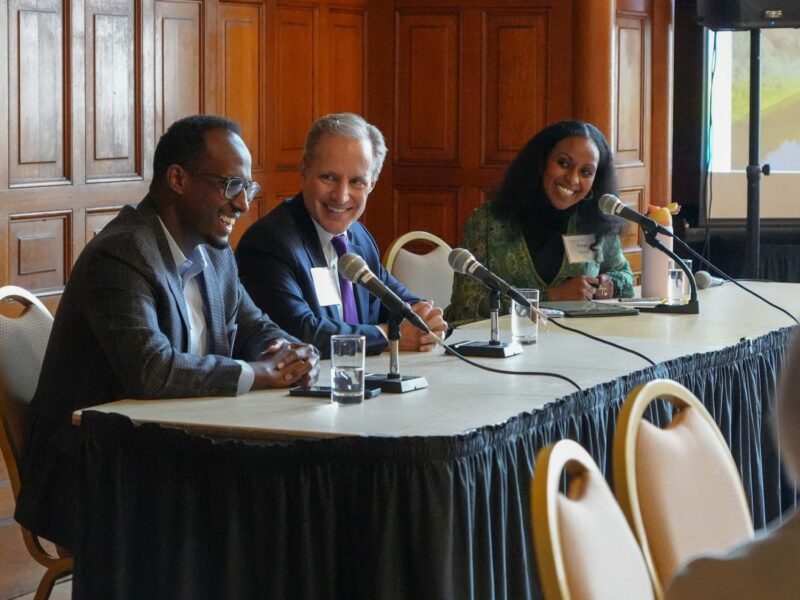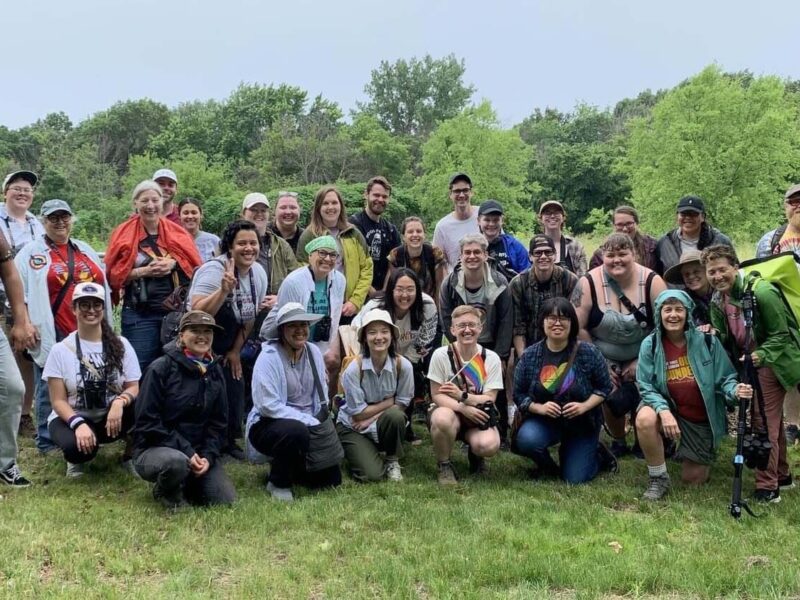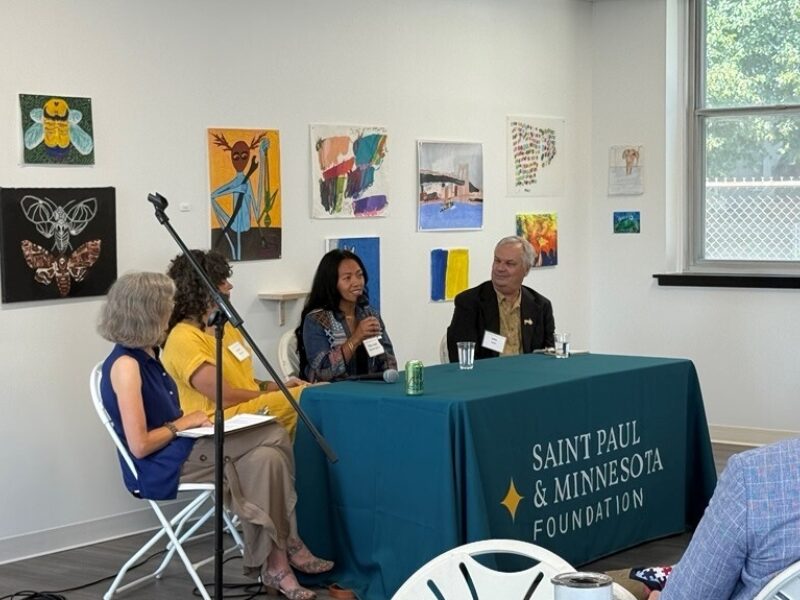Our recent giving+Together event looked at the importance of health care advocacy for older adults of color.
Ageism is one of the most accepted forms of discrimination, and can be exhibited on individual, institutional and systemic levels, creating advantages for some and disadvantages for others.
At our recent Giving+Together event on health equity in the age of COVID-19, panelists talked about these inequities, and the role COVID-19 has played in exacerbating disparities faced by older adults. Speakers included:
Dr. Tetyana Shippee, Associate Professor, Division of Health Policy and Management at the University of Minnesota
Dr. James Pacala, Professor and Head of the Department of Family Medicine and Community Health at the University of Minnesota
Stella Whitney-West, Chief Executive Officer at NorthPoint Health & Wellness Center
This event was moderated by Senior Vice President of Community Impact Pahoua Yang Hoffman, who knows firsthand what it's like to support an aging parent.
Topics covered in the discussion included ageism, racism, geography, politics and economics, and the roles they play when it comes to older adult care.
View the full event recording and read discussion highlights below.
Discussion Highlights from Our Speakers
How do racism, ageism and geography affect your work?
Dr. Tetyana Shippee: I actually spent two years living in a long-term care setting to better understand what matters for people who use long-term care.
What residents told me time and time again is that even though they need medical services, that's why they're in long-term care, they want to be thought of as people first.
And first means quality of life matters. Minnesota is really unique in that we are one of the two states that has validated measures of quality of life that are collected in all of our nursing homes in the state.
So working with this rich data source, I've looked into quality of life measures for our own Minnesota nursing home residents and I will tell you that Minnesota does pretty well for our white residents.
About 82 percent of our white residents are pretty satisfied with their quality of life in nursing homes, but my research has found increasing and growing racial ethnic disparities and quality of life between Black, Indigenous, persons of color, and white people.
We find across all these measures that the Black and Indigenous people in particular have the lowest scores and the areas in which we see the greatest disadvantage are food satisfaction and enjoyment, activities that are offered in nursing homes and also how they’re treated by staff.
What are the daily issues that you see around serving older adults in your community, and how do some of these disparities show up there?
Stella Whitney-West: This community [in north Minneapolis] is one of the poorest. If you look at the median income in the zip code 55411, it's about $41,000 compared to the median household income for Hennepin County, which is like $78,000, so there’s the disparity there.
I think too when you look at the disparities regarding health, they are certainly exacerbated with age, so much so that when you look at the life expectancy in communities of color, particularly the African American community and the Native American community, you don’t see the life expectancy that you see for white Minnesotans.
When you talk about those social determinants of health, certainly the creation of wealth and the ability to have access to wealth makes a huge difference in some of those social determinants of health. Most families gain their wealth through homeownership, and if you don’t have that, the ability to afford long-term care as older adults is less for those people of color.
As a geriatrician at the U of M, you train our healthcare workforce to better care for older adults. Can you define ethno-geriatrics?
Dr. James Pacala: It's simply looking at the intersection of ethnic identity with the medical problems that occur in older adults. One thing about geriatrics that we’ve always gotten is the importance of social determinants of health and illness.
And I’ve said this a billion times in my career, that we can get every medical decision right, we can prescribe every medicine properly, we can do exactly the right surgeries and if we ignore social, and I would include ethnic and racial factors, we will fail our patients.
Tragically, 89 percent of COVID-19 deaths in Minnesota were of individuals 65 and older. Why has this devastation affected our long-term care facilities?
Shippee: Racial composition of nursing homes was the most significant predictor of increased COVID infections and COVID mortality. Meaning that facilities that had a higher proportion of Black and Hispanic residents had a higher likelihood of having COVID infections and COVID mortality because of underlying systemic racism.
Whitney-West: One of the areas that COVID unmasked for us was the public health system. In this country, the public health infrastructure was not adequate. The fact that wearing a mask turned out to be a political decision really exposed that we did not have a good public health response to COVID-19.
Pacala: In the early days of COVID, we found out the needs of our patients were different at each of our four clinics. It's about tailoring it [care] to the local needs, I think it's most important.
As a geriatrician, one of the biggest hits that COVID has created on patients is in mobility. Many of my patients have been stuck in their apartments and in their homes for a year. Their not moving, taking their daily walks, not getting out, that also has a big effect as we know on convalescence.
If you are interested in supporting nonprofit organizations that serve older adults, here are a few organizations that have received support from the Saint Paul & Minnesota Foundation:
To learn more about how you can support organizations like the ones featured, please contact your philanthropic advisor. Learn more about upcoming events.
Editorial Note: Quotes from our participants have been edited for clarity and length.




